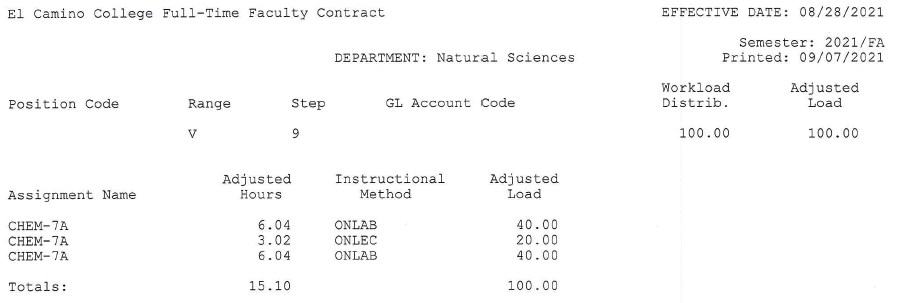Pay Calculation Tutorial – Extensive Laboratory Overloads
Warning: This page is out of date and outlines a contractual process that is now changed! This page is being left in place, however, as it contains other useful resources and can be used to calculate retroactive payments. See Appendix B of our current CBA for updated information.
If your teaching load contains courses that have “extensive laboratory” components that result in overload, there is an additional step that must be considered in the calculation of load. Otherwise, the procedure is very similar to calculating overload as is shown and explained here. For more explanation of the load calculation below, visit the parent page of this tutorial or the lab-lecture pay parity page.
Regular contract:

Overload contract:

Catalog entries:

With any course that contains laboratory hours, it’s important to determine if they are “extensive” or not. This can be done by referencing the lab-lecture parity MOU. If the course is listed as an “extensive laboratory” in that document, then the laboratory hours count as such in the load calculation below.

For this example,
R = $69.28 (as of December 2021, this rate is $74.27)
N = 18 hours
P = 20%
![]()
This number should be reflected in the “Amount/Pay Pd.” field in the upper right of the overload contract. As you can see from this example, this faculty member was slightly overpaid due to a systematic rounding error in the District’s Colleague software. Finally, the “Total Stipend” field is calculated by multiplying this monthly overload rate by 5. The reason for this is that you are paid for 5 of the 6 months during the fall/spring terms for overload, as you are not teaching your fall/spring courses in July/January.
